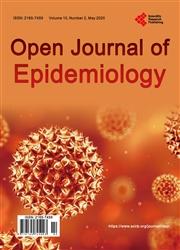Fight against COVID-19: Survey of Spices & Herbs Used in North India
引用次数: 5
Abstract
Treatments for the ongoing COVID-19 global pandemic continue to be researched. Clinical trials with antivirals or immunomodulators have met with variable success. Traditional herbal remedies for health problems are popular for prevention and treatment of ailments especially in low resource countries. It is notable that morbidity and mortality from COVID were lower in low resource countries compared to the west. Other factors attributed to this difference include ethnicity, temperature, humidity, innate immunity, and nutrition. Objective: To identify the traditional herbs used for protection against COVID, in north India. Method: This questionnaire-based survey was conducted from August to September 2020 at five districts in North India. Participation in the brief interview was voluntary. Responses were recorded in a predesigned questionnaire (Annexure). Descriptive data analysis was done. Results: A total of 250 people participated in the interview. Majority (84.4%) of the respondents used mask. A total of 66.8% of the respondents confirmed using traditional herbs and spices. Most frequently used home remedies were decoction of herbs including ginger, Tinospora cordifolia, turmeric, black pepper, carom seeds. Turmeric milk was also popular choice. COVID positivity was present in family members of 4% (n = 10) of the respondents, of these four did not consume any herbs. Conclusions: This study provides an overview on the use of home remedies in North India. Given the scarcity of reliable information on home remedies and traditional medicines, further research is needed to develop robust evidence for their role in disease prevention and treatment.抗击COVID-19:印度北部使用的香料和草药调查
持续的新冠肺炎全球大流行的治疗方法仍在研究中。抗病毒药物或免疫调节剂的临床试验取得了不同程度的成功。治疗健康问题的传统草药在预防和治疗疾病方面很受欢迎,尤其是在资源匮乏的国家。值得注意的是,与西方相比,低资源国家的新冠肺炎发病率和死亡率较低。造成这种差异的其他因素包括种族、温度、湿度、先天免疫和营养。目的:鉴定印度北部用于预防新冠肺炎的传统草药。方法:这项基于问卷的调查于2020年8月至9月在印度北部的五个地区进行。参加简短访谈是自愿的。回答记录在预先设计的调查表中(附录)。进行描述性数据分析。结果:共有250人参加了访谈。大多数(84.4%)受访者使用口罩。共有66.8%的受访者确认使用传统草药和香料。最常用的家庭疗法是草药煎剂,包括生姜、金叶、姜黄、黑胡椒、角豆种子。姜黄牛奶也是受欢迎的选择。4%(n=10)的受访者的家庭成员出现了新冠病毒阳性,其中四人没有食用任何草药。结论:本研究概述了北印度家庭补救措施的使用情况。鉴于缺乏关于家庭疗法和传统药物的可靠信息,需要进一步研究,为其在疾病预防和治疗中的作用提供有力证据。
本文章由计算机程序翻译,如有差异,请以英文原文为准。
求助全文
约1分钟内获得全文
求助全文

 求助内容:
求助内容: 应助结果提醒方式:
应助结果提醒方式:


